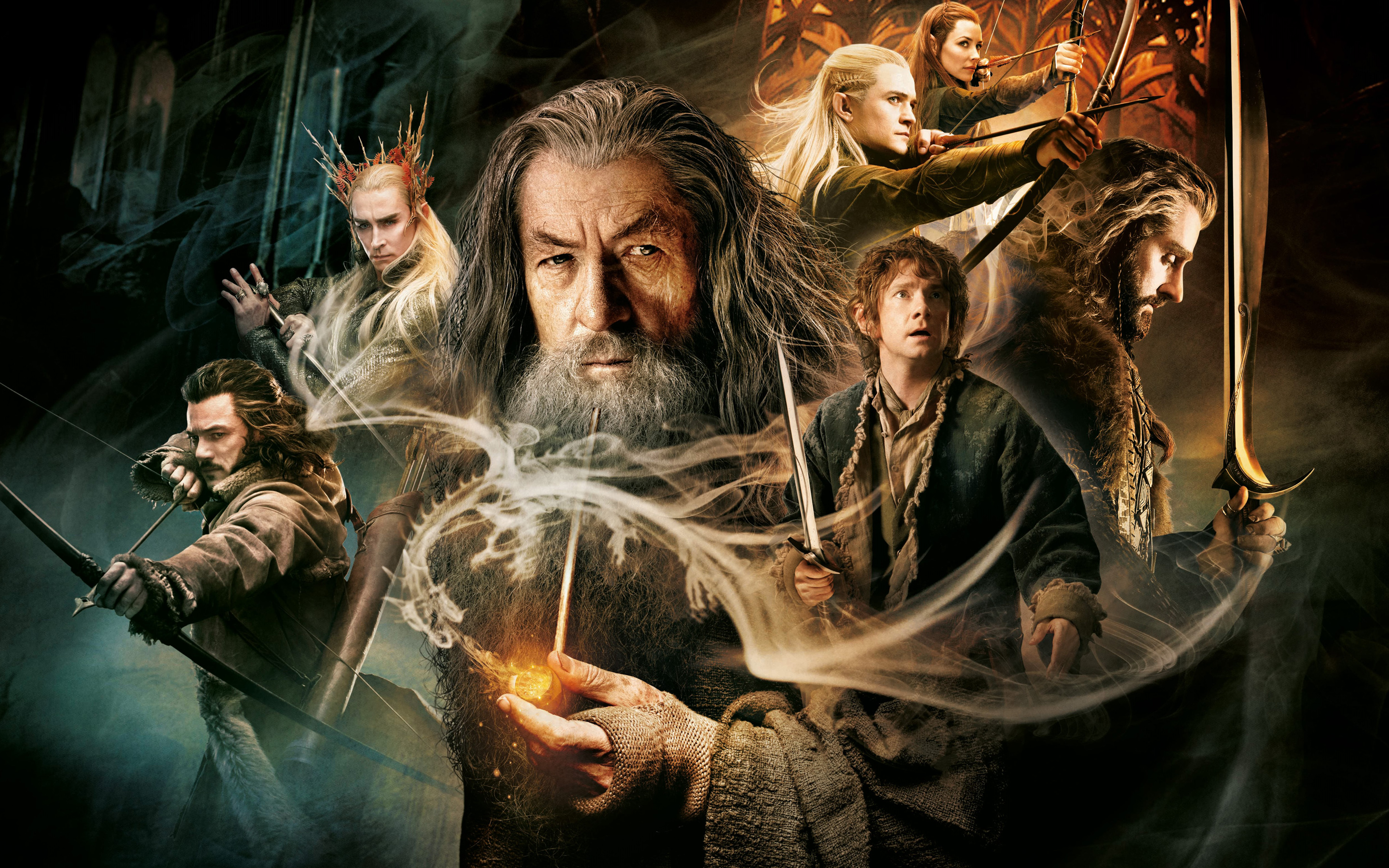There has been many a great middle movie in trilogies throughout cinema history: Star Wars: The Empire Strikes Back and The Lord of the Rings: The Two Towers are two great examples. These two succeeded because, while they serve as both sequel to the first film and as a bridge to the conclusion, they also were written in such a way that they could stand-alone as their own movie. For me, the mark of a truly great middle movie, or trilogies in general, is the fact that they don’t need a particular watch order to be enjoyed (read more about the Lord of the Rings watch order here) The Hobbit: The Desolation of Smaug, on the other hand, is not an example of a great middle movie. It is in fact, a pretty bad example for a number of reasons.
And before we start, no I don’t think it’s unfair to compare Desolation of Smaug with Empire Strikes Back or Two Towers: all these franchises had multi-million dollar budgets, star power, a successful predecessor, and a loyal fan base. In fact, one could even argue that Desolation of Smaug had a distinct advantage over the two –it’s part of a prequel trilogy to a successful, well-loved, and culturally important franchise. For all intents and purposes, it should be easy for it to execute a great story.

Unfortunately, much like Attack of the Clones, The Desolation of Smaug falls flat on its face. It’s not the story, per se –after all, it’s based on beloved children’s classic The Hobbit –and it’s definitely not the visuals. Rather, it falls prey to the same reason that the entire Hobbits franchise isn’t doing so well: the script for this 9+ hour trilogy is based off a 276-page book. Jackson, along with co-writers Philippa Boyens and Fran Walsh, injected their own brand of mischief and darkness to the Tolkien classic, to very inconsistent results, and to say that some scenes will be bloated and unnecessary would be an understatement. In a way, it feels like Jackson is keener on creating a trilogy to serve The Lord of the Rings rather than creating a franchise unto itself.
Breathtaking Spectacle
Which isn’t to say it’s beyond redemption: as one of the modern masters of movie magic, Peter Jackson created a pre-War of the Ring Middle-Earth that, if possible, was more enchanting, more enthralling, and frankly, more beautiful than the Middle-Earth we saw in The Lord of the Rings. From the Lonely Mountain to Esgaroth and all the forests in between, Peter Jackson rendered a version of Middle-Earth that was brighter, purer, more innocent than the ones in the original trilogy, and with the advent of better technology, all of that beauty can now be rendered more vividly and in higher definition than ever before. As a master of melding special and practical effects, Peter Jackson created a Middle Earth that was so real, you can almost feel your other 4 senses aching to experience what your eyes are seeing.

In some aspects, the spectacle of it all does make up for its lack of story. Take, for instance, one of Desolation of Smaug’s best scenes, where Bilbo and the Dwarves use empty barrels to escape the pack of Orcs chasing them. As they zoom down a river, one can’t help but think: they are so doing this for the video game adaptation. None the less, the cinematography, the visuals, and the acting, are so brilliant that one can forgive this moment of gimmick. Even the cast of The Hobbit: The Desolation of Smaug, despite the thin-ish plot, managed to keep it together and deliver award-winning performances. Martin Freeman as Bilbo continues to delight, while newcomer Evangeline Lily, despite her character being, frankly, unnecessary, still managed to convince the audience that she belongs there. Meanwhile, Benedict Cumberbatch brings to life the terrifying Smaug with precision acting.
Underdeveloped Story
But alas, the spectacle can’t make up for all of the story’s shortcomings. For all of its glitz and glamour, The Hobbit: The Desolation of Smaug simply did not have enough story to justify its more than 3-hour runtime.

Yes, the movie is still enjoyable if you’re not too keen on bloated narratives. We’re not even being Tolkien purists here; The Desolation of Smaug is simply just too complicated, too lengthy, too unnecessary for a storyline that should have lasted only a few scenes.
I mean, that’s the whole problem with this franchise in the first place: every single flaw of each of The Hobbit movies boils down to the fact that they shouldn’t have tried to make a trilogy out of a 300-page book. It simply was just too short.
It’s not all terrible, but there are enough meandering scenes that leave you wondering: oh is the movie not done yet? Wow they should have ended that a while back.




